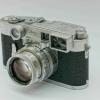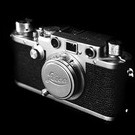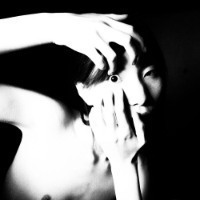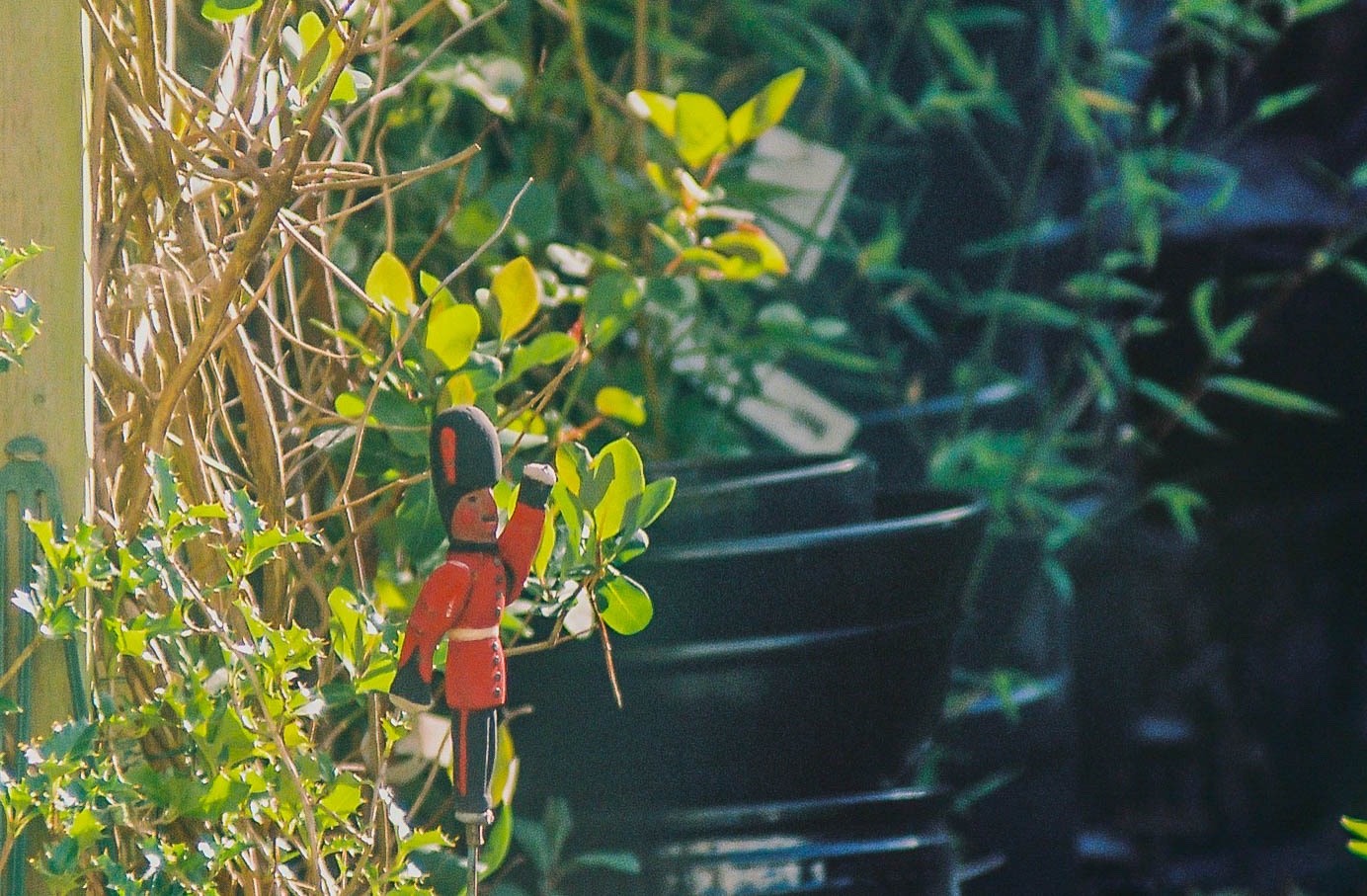-
Posts
5,982 -
Joined
-
Last visited
Profile Information
-
Member Title
Collector and User
-
Country
Ireland
Converted
-
City
Dublin, Ireland
-
Hobbies
Photography, Jazz and Blues
-
Job
Consultant
-
Your Leica Products / Deine Leica Produkte
IID, IIIC, M3, M6, M7, M8, M9, Summar 5 2.0, Elmars 24 3.8, 5 3.5, 50 2.8, 90 4.0 (collapsible), 90 4.0 C, Summarons 3.5 3.5, 35 2.8 (goggles), Summicrons 28 ASPH, 35 ASPH, 50, 90,Tri Elmar 16-18-21, Summiluxes 35 ASPH, 50 ASPH, Summarit 75, X1, DLu
Recent Profile Visitors
-

Same formula v. Same performance in Leica RFDR lenses
willeica replied to Ronazle's topic in Leica Collectors & Historica
There are a number of factors here, including sample variation and condition in a lens that is about 60 years old. That said, I find that my example of a DR is slightly superior to that of my Rigid example, but the difference is minor and, in truth, I don't think about these things as the quality of Leitz/Leica Lenses usually exceeds my requirements. Don't discount sample variation in anything that came out of Wetzlar. I have multiple copies of a number of Leitz lenses and sample variations can be seen. I don't test them all, though. Usually the sample variation is tolerable and not worth worrying about. The slight superiority I have noted in my DR may indeed be the result of precise tolerances because of its dual range functionality. William -

Conversions, upgrades, modiefied ones
willeica replied to romanus53's topic in Leica Collectors & Historica
They and Elmax conversions appear on ‘upgraded’ cameras at auction from time to time. I don’t recall ever seeing an Anastigmat lens for sale on its own. I have a couple of modified Elmars from I Model As, one on a camera that had been modified to a Standard and one on its own. Both were significantly shorter in length than items on the I A cameras. Jerzy and I did an exercise in measuring early Elmars some years ago. It must have been the increase in mount size from 33mm to 39mm that caused this. The mount for the I Model A also needs careful positioning of the lens at c 7 or 8 O’Clock as it is being attached, hence the dots or arrows on the early British conversions, both on the camera and on the lens, to create the first ever interchangeable lens Leicas.When I first took a lens off a I Model A to measure it I had difficulty remounting it until Jerzy told me how to do this. William -

Conversions, upgrades, modiefied ones
willeica replied to romanus53's topic in Leica Collectors & Historica
They would have needed to have a 39mm thread added as the original I Model A lenses had a 33mm thread. I covered this in my recent Zoom/You Tube talk on the first interchangeable lens Leicas which were modified in Britain and I was surprised at the number of people who did not know about this. William -
A few test images on Kodak Portra 160 film from my Leica III with British Dallmeyer 12 inch (300mm) f4.5 lens from c 1934/5. Leica had nothing like this back then. My trial was affected by a storm called Kathleen, some wind on (dropped frames), focus and framing issues. Still, there was enough to see that this is a very fine lens which would produce great images once those issues had been overcome. Of course, I did not acquire this rig to take photographs with it, but rather because of its extreme rarity as a collector's item 😇 . The lens is, also, extremely heavy (c 3.5 lbs) and a good strong tripod is recommended. Still, 3 of these were hand held. My arms and eyes were aching afterwards. William
-

Lens cap for Leica I Model A "close focus"
willeica replied to athabasca's topic in Leica Collectors & Historica
Alan, I have two close focus I As, one with the flattened screw and one without. To be honest, the 50 Elmar is a fine lens cap in itself. I have far less lens caps (metal and plastic) for the lens than I have Elmars. It is an amazing lens which is hard to damage and it hardly ever causes flares. I have a range of FISONs, even the one with the square front, FIKUS hoods and a VALOO, but I hardly ever use them. I also have a number of filters and close up lenses for the Elmar. I suspect that I have between 20 and 30 50 Elmars. Every Leica user/collector should have a copy of the lens. It is 'the lens that made Leica'. William -
Enjoy your time in Kerry. The weather in Dublin is lovely today. We are still basking in the light of our exhibition launch on Thursday night. You may see some mention of it in The Irish Times. I hope the link works. https://irishtimes-prod.video.arc-cdn.net/wp-irishtimes/20240412/66191cc953dee25ceb36b2f0/t_1c2fe04d8cf6444f936fa420cf36be88_name_Photo_Museum/hlsv4_master.m3u8 If not, this link to an Observer piece by Sean O'Hagan last Sunday should work for UK readers https://www.theguardian.com/artanddesign/2024/apr/07/akihiko-okamura-photographs-troubles-northern-ireland-memories-of-others-exhibition If you do travel to Dublin (a) let me know and (b) visit our exhibition. William
-
Mezquita -Catedral de Cordoba. A Cathedral built inside a Mosque in Cordoba in Andalusia, Spain. There is a lot of history in this https://en.wikipedia.org/wiki/Mosque–Cathedral_of_Córdoba William
-

What is the attraction?
willeica replied to CaptainScarlet's topic in Leica M-A / M7 / MP and Film M
I agree with all of this. The Nikon F was like a Leica M3 with a pentaprism (shrunken Visoflex) and a flappy mirror, making it much more suitable for tele-photography. Even Nikon's first few attempts at metering heads were clunky and heavy and it was not until the F3 that they finally got that right at professional level, which was about time as other companies such as Pentax and Olympus had shown the way to do this. The Leicaflex and R series were too late and too expensive and not sufficiently different to survive. The M series rangefinders are what distinguishes Leica, even today. One attempt to go with metering in an M (the M5) produced a large and clunky camera which abandoned the philosophy started by Barnack in the mid 1920s. The company had to revert with the M4-2 in order to save the brand. Only with the M6 was the concept back onto the right road, a small camera with a range of superb small lenses which was suitable for particular types of photography. If Alan, the OP, is looking to continue doing what he has done with digital Nikons for the past 20 years, the Leica M range is not what he needs. Perhaps, the L range , with options from other consortium members might suit, but as I know very little about such cameras and lenses, I could not suggest that he go there, but he should at least have a look. The important distinguishing factor, however, is not the range of cameras or lenses, but the photographer and what he or she wants to do in photography. William -

The amazing history of the Leicas Luxus
willeica replied to dubois pierre's topic in Leica Collectors & Historica
I just sent you a link to this, Pierre. The set comes with expertise by Ottmar Michaely. I presume this one 'checks out' with you. William -
Kodak went one way while the rest of the world was trying to over-complicate things. A lot of early 'light meters' were quite complex and even artistic like this Kaufmann's Posographe which has series of sliders connected to a web of levers inside the body for extra accuracy. An ideal accessory for the 'Leicaman'. For 'real photographers', however, nothing could beat the Hurter and Driffield's Actinograph of 1888. Hurter and Driffield rated different types of dry plate and their rating was printed as a H&D rating on boxes of such plates. It is marked on this device as 'Speed of Plate', sort of a Grandad to today's ISO. Note here the different months of the year and the times of the day to account for UV light. Sunny 16 is a 'walk in the park' compared to this kind of thing. William
-

Help requested: M3 rewind knob marks
willeica replied to robh's topic in Leica Collectors & Historica
Look at pages 207/8 in Part 2 of this article for details of the rewind knob changes. Serial numbers for changes are across the top Bawendi early M3 part 1.pdf Bawendi early M3 part 2.pdf William -
I helped you with that, BilI, and I agreed with your conclusion. Everything points towards Konrad and, yes, that was his preferred spelling for his father's name. I have read some of the Barnack/Forsyth correspondence in the package which came with No 105, plus some later stuff. The 'Barnack League' material was also hilarious, very 1930s in the 1960s, if you can follow what I mean. William
-

Unknow Leica Camera
willeica replied to Enrico Annibale Ruggeri's topic in Leica Collectors & Historica
The term 'Leica' only applies to a particular group of cameras made by Leitz and by Leica AG (with permission to use the name from Leica Microsystems which is now a separate company) in the current generation. This is not one of those cameras. In fact there does not seem to be any evidence that the item was made by Leitz. The lens certainly was, but that does not make the camera on which it is mounted a 'Leica'. On the second point, I have a Robot camera which was uses 35mm film (24mmx 4mm format) and which was used by the Swedish Air Force, for purposes unknown. William -

1944 Leica IIIc K (Chromed)
willeica replied to alphonse2501's topic in Leica Collectors & Historica
Then you have the so-called 'half-race' cameras. There was a thread about this here and I was none the wiser about the exact difference, even after Jerzy showed a stripped down half- race camera. My only conclusion was that half-race meant 'less ball bearings'. This one, which is in my collection, was being sold as a IIIcK, which it is not, but it is a half-race camera. Despite its appearance, it actually works very well and is very smooth to use. William






















